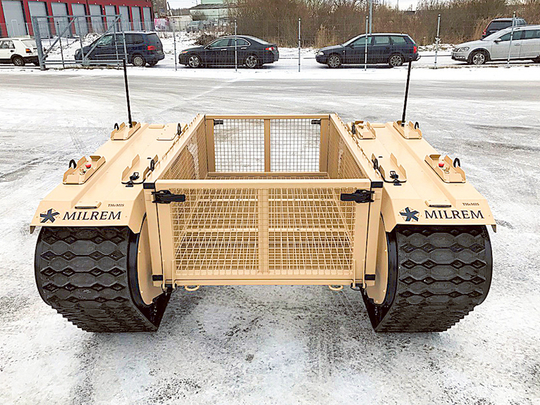
ABU DHABI: Saudi Arabia is showing strong interest in autonomous weapons systems, said Kuldar Vaarsi, Chairman of the Board of Milrem, an Estonian defence company that specialises in robotic warfare systems.
“Speaking modestly, there is a very high interest in Saudi. There is also interest across the entire Gulf, specifically Oman and Qatar,” said Vaarsi in an interview on Thursday.
According to a report released by Deloitte in January 2017, several GCC countries spend a significant percentage of their GDP on defence, with Oman and Saudi Arabia being two of the top three. Saudi and the UAE remain the Middle East’s top spenders overall, with IHS Jane’s Annual Defence Budgets Report listing them at numbers 5 and 14 respectively.
On Monday, Milrem signed a letter of intent with the UAE-based International Golden Group (IGG) to develop and arm unmanned ground vehicles (UGV) at Idex, the defence exhibition in Abu Dhabi.
“Warfighting is moving very strongly towards autonomous systems. However, for some period of time, a human has to be in the loop — you need a soldier pressing the fire button,” Vaarsi said.
The THeMIS, designed by Milrem, is the world’s first fully modular hybrid UGV, meaning it can have different weapons swapped on and off the top.
“The soldier operating the THeMIS can be up to 2km away. That means the soldier is very safe, operating the system at a distance via camera,” he added.
The letter of intent is to develop the concept further, and actually start testing it with the UAE Armed Forces, according to Vaarsi.
“The partnership with IGG is a very good collaboration for us, and it will take our systems in to action with the armed forces.”
This, he hopes, will lead to an order.
“This is the beginning of the road to a sale,” he said. “We have met the expectation of the market, and our solution has hit the perfect spot that the market is looking for.”
In a survey of defence executives in 2014, consultancy McKinsey found that half of those polled saw unmanned equipment as a product most ripe for disruption by non-traditional players.
Whilst unmanned aerial vehicles (UAVs) feature prominently in the arsenals of many countries, UGV’s have yet to feature to the same degree on the battlefield.
“These are very affordable solutions, hard to detect on the battlefield, and very dangerous. They reduce the need for manpower, and most importantly, they take soldiers out of harm’s way.”
“There is a very good understanding of UGVs in the region,” Vaarsi added.












